Mid 1800's sidearm

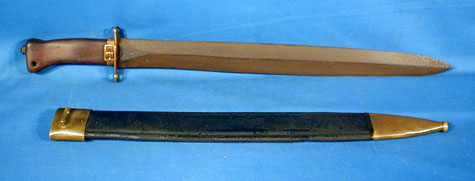
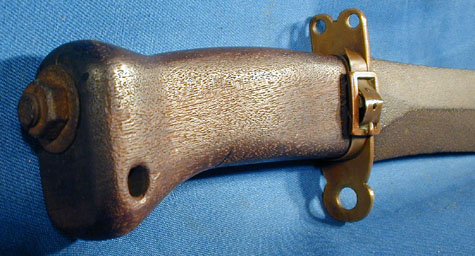
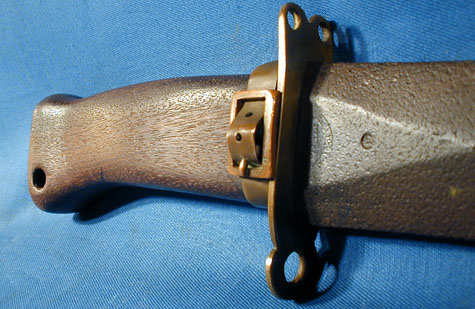
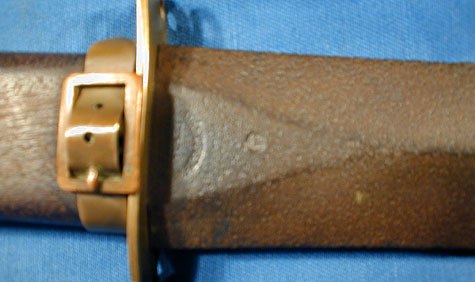
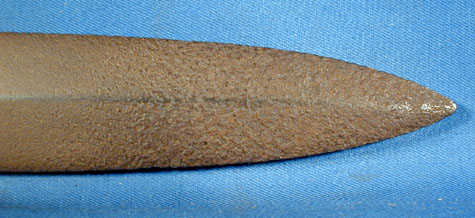
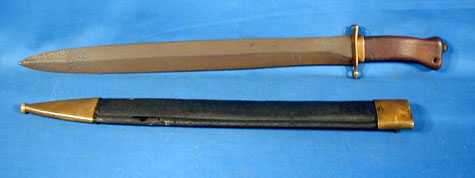


length: 23 3/4"
Unknown shortsword/sidearm or bayonet. Stylistic elements of the scabbard
says 1840-1860's, but I don't recognize the grip and guard at all. Blade is
of thin diamond cross section, slightly leaf-shaped. Unusual buckle is
immovable and an integral part of the grip fittings. Guard has two holes at
the topside, one large hole on the bottom end. Manufacturer's imprint is
unreadable even under magnification. Possibly a converted Italian Piedmont M1844 artillery bayonet.
Two thumbs up to my friend Conogre who spotted this in a Florida antique
shop and knew it would fit my jones for mid-1800's chopping sidearms. Now if
I could only figure out what the heck it is .....
I've posted this whatsit question to the Antique and Military sword forum at Swordforum.com,
you can see more info and the discussion there.
update 10/19/01 - no word from the Sword Forum discussion, but I sent out a
note to a couple of bayonet collector friends and got some helpful answers
back:
"It is my opinion, this is a cut-down/modified French Model 1831
Artillery
Short Sword; the dimensions are almost identical except for the hilt. It
appears the hilt is much newer than the blade and its origin/style is
unfamiliar to me. I have seen the French blades with the same style
cartouche on the ricasso as the one pictured on the hyperlinks." -- AR
"Not one that I can say I've seen before, the blade is 100% French, the
maker would be Talbot (you cannot mistake the style of the makers stamp),
the blade style is the same as other French Gladius/Cabbage choppers.
The French made many odd ball bayonets using these blades, using modified
and unmodified blades, ABC Vol2 shows a few. I don't think however that
yours is a bayonet, I would say that its a rehilt of a sidearm for use as
a sidearm. I know many of the French sidearms found their way to America
for the CW, however many more found their way to America via Bannermans
and other outlets. The other possibility is that it was rehilted in
Italy, I've seen several odd Italian bladed bayonets which just have a nut
on the hilt to secure the blade tang. However if I was a betting man I
would guess the hilts been added in the last few years, the condition of
the blade is well aged (even compared to the scabbard), yet the wood grip
shows no exposure to water or any wear." -- JH
blade: 18 7/8"
blade width: 1 11/16"
grip: 4 7/8"
guard: 2"
weight: 1 lb 7 oz

